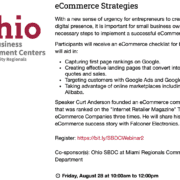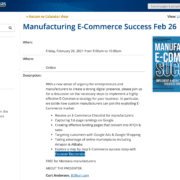Applying The Theory of Constraints to Your eCommerce Strategy
In a recent post, we discussed the classic business book, “The Goal” which shares a fascinating story describing the powerful results utilizing the Theory of Constraints.
The Theory of Constraints applies to the practice of uncovering bottlenecks and road bumps that restrict a business from hitting goals.
In other words, identifying exactly where a constraint lives within a business that prevents the flow of production and cash.
Consequently, the Theory of Constraints (TOC) can be applied to basically any business or industry.
For example, companies that make a product or provide a service, all suffer constraints and bottlenecks of some type. Especially with manufacturing.
Yet, the Theory of Constraints is also applicable to the service sector such as the medical field, a doctor’s office, restaurants, as well as entertainment.
Ever stand in a long line at the airport or while waiting for concessions at the theater or a sporting event? Those are certainly irritating constraints.
To take it one step further, let’s discuss applying the Theory of Constraints to your website and eCommerce strategy.
First, this video below offers an excellent explanation of the Theory of Constraints:
Self Inflicted Wounds

The key with the Theory of Constraints is identifying those dreaded constraints.
Exploiting the negative activities or processes within an organization that denies a company goal from being met.
Yet, discovering the sources of roadblocks and hurdles can be extremely challenging.
In many cases, inefficiencies and constraints are self inflicted.
In particular, when the constraint is a “sacred cow“.
You know the type, “this is how we have always done it”.
Profits and positive cash flow are absolutely essential to achieving sustainability and company success (this is my “Captain Obvious” comment of the day).
Yet, many companies fail to achieve these goals. What gets in the way?
Lack of knowledge, lack of understanding, incompetence, fear of change or possibly ego?
Could it be a deeper commitment to “this is how we have always done it” versus a relentless commitment to continuous improvement and finding a better way?
The authors use “The Goal” to describe how to “explain their understanding of manufacturing” and why maximizing throughput is essential.
“The Goal” is about new global principles of manufacturing. Even though the book was written 34 years ago, this concept is still new for many people.
Theory of Constraints Five Focusing Steps
The Theory of Constraints offers practical and highly effective solutions to systematic problems.
Five Focusing Steps = POOGI = Process of On-Going Improvement:
- Identify the Constraint
- Exploit the Constraint
- Subordinate Everything to the Constraint
- Elevate the Constraint
- Prevent Inertia from Becoming the Constraint
In particular, think about your sales lead process. Your web presence. Your internet marketing strategy.
Are there constraints that prevent you from maximizing your business opportunities?
What hurdles and road blocks do you and your company face with attracting new business?
If you are a digital immigrant (born before 1980), your constraint may simply being completely overwhelmed by the whole process of eCommerce, Social Media and Inbound Marketing.
- Do you lack the knowledge?
- Do you lack the experience?
- Not sure where to turn for help?
- Additionally, who to trust for help?
- Is it lack of funds for your marketing budget?
Applying Theory of Constraints to Your Website

The Theory of Constraints can be applied to your website as well.
Does your website make a great first impression or as I like to call it, “Webpression”?
For example, do you make it easy for a customer to navigate your website?
In addition, do you provide relevant and necessary information for a buyer?
Can a client easily submit a drawing or RFQ?
In other words, does your website provide enough information that a customer could make a buying decision at midnight on a Friday night?
Especially for those obsessed entrepreneurs that just will not wait until Monday morning when you open. They need an answer NOW!
They are trying to solve a problem and are looking for a solution at that very moment.
Is the information on your website clear and concise explaining your core competency?
Instead of trying to be everything to everyone, deliver a focused message and explanation on what you do best.
For example, I had a client who worked tirelessly on creating a high level website for her manufacturing business.
Soon after launching her new website, she landed a brand new account. This new customer discovered her through her new website.
Her new customer lives in Europe. The story goes, while sitting with his spouse, pretending to be interested in the romantic comedy that she had selected for the entertainment that particular evening, he started discretely searching for a new vendor while on his phone (he is quite the multitasker).
He stumbled on my client’s website that she had recently launched.
A $400,000 order followed by being available late on a Friday night while “watching” a romantic comedy.
Eliminate those dreaded website constraints that make it difficult to do business with you.
Applying the Theory of Constraints to Your eCommerce Strategy

Finally, let’s look at Theory of Constraints from an eCommerce stand point.
Questions to ask yourself to help identify constraints when it comes to eCommerce (especially for those just starting out):
- Is your current web designer a good fit and delivering results?
- Does your website make it easy as possible for customers to purchase from you?
- Do you offer easy access on your website to connect with you? (Phone, Email, Social Media)
- Are you hanging out online where your buyers are hanging out?
- Do you offer finished goods that can easily be purchased through an efficient eCommerce store?
- Is your website built on responsive design?
- Do you have your SSL certificate?
- Do you offer multiple payment options?
- Does your eCommerce store show a clear and concise Call to Action on landing pages?
- Does your eCommerce store offer a quick and simplistic check out process?
These are just a few factors to explore with your eCommerce strategy.
Make a commitment to enable your customer to engage with you as easily as possible.
Work diligently to eliminate those dreaded constraints.
For more helpful tips on launching your eCommerce store, click this link below:
eCommerce Checklist: Manufacturing eCommerce Strategies
Wrapping It Up
Thanks for taking the time to read this post.
For additional information, click these links below:
- Are You Familiar with “The Goal: A Process of Ongoing Improvement”?
- 19 Tips for Curing “I Hate Change” (Plus a Healthy Dose of eCommerce)



















Leave a Reply
Want to join the discussion?Feel free to contribute!